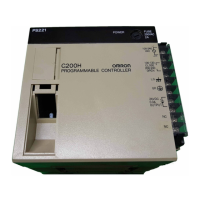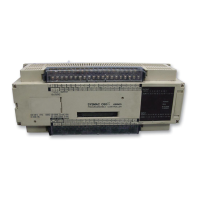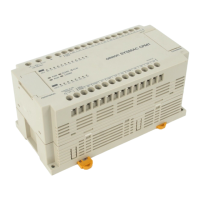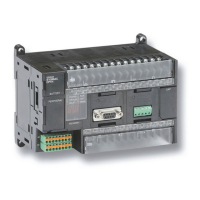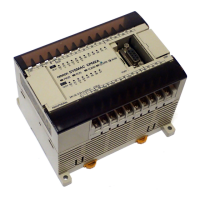Glossary
43
output The signal sent from the PC to an external device. The term output is often
used abstractly or collectively to refer to outgoing signals.
output bit A bit in the IR area that is allocated to hold the status to be sent to an output
device.
output signal A signal being sent to an external device. Generally an output signal is said
to exist when, for example, a connection point goes from low to high voltage
or from a nonconductive to a conductive state.
parity Adjustment of the number of ON bits in a word or other unit of data so that
the total is always an even number or always an odd number. Parity is gener-
ally used to check the accuracy of data after being transmitted by confirming
that the number of ON bits is still even or still odd.
PC An acronym for Programmable Controller.
peripheral device Devices connected to a PC System to aid in system operation. Peripheral
devices include printers, programming devices, external storage media, etc.
port A connector on a PC or computer that serves as a connection to an external
device.
Power Supply A Unit that mounts to a Backplane in a Rack PC. It provides power at the
voltage required by the other Units on the Rack.
present value The current value registered in a device at any instant during its operation.
Present value is abbreviated as PV.
Programmable Controller A small, computer-like device that can control peripheral equipment, such as
an electric door or quality control devices, based on programming and pe-
ripheral input devices. Any process that can be controlled using electrical
signals can be controlled by a PC. PCs can be used independently or net-
worked together into a system to control more complex operations.
programmed alarm An alarm given as a result of the execution of an instruction designed to gen-
erate the alarm in the program, as opposed to one generated by the system.
programmed error An error arising as a result of the execution of an instruction designed to gen-
erate the error in the program, as opposed to one generated by the system.
programmed message A message generated as a result of execution of an instruction designed to
generate the message in the program, as opposed to one generated by the
system.
PROM [P(rogrammable) R(ead) O(nly) M(emory)] A type of ROM into which the pro-
gram or data may be written after manufacture, by a customer, but which is
fixed from that time on.
PROM programmer A PROM programmer is a device used to write data to ROM, PROM, and
EPROM storage devices.
Rack An assembly that forms a functional unit in a Rack PC System. A Rack con-
sists of a Backplane and the Units mounted to it. These Units include the
Power Supply, CPU, and I/O Units. Racks include CPU Racks, Expansion I/O

